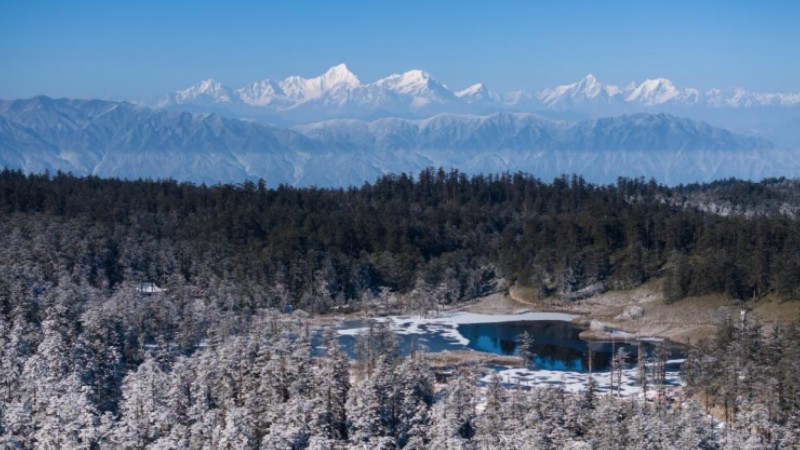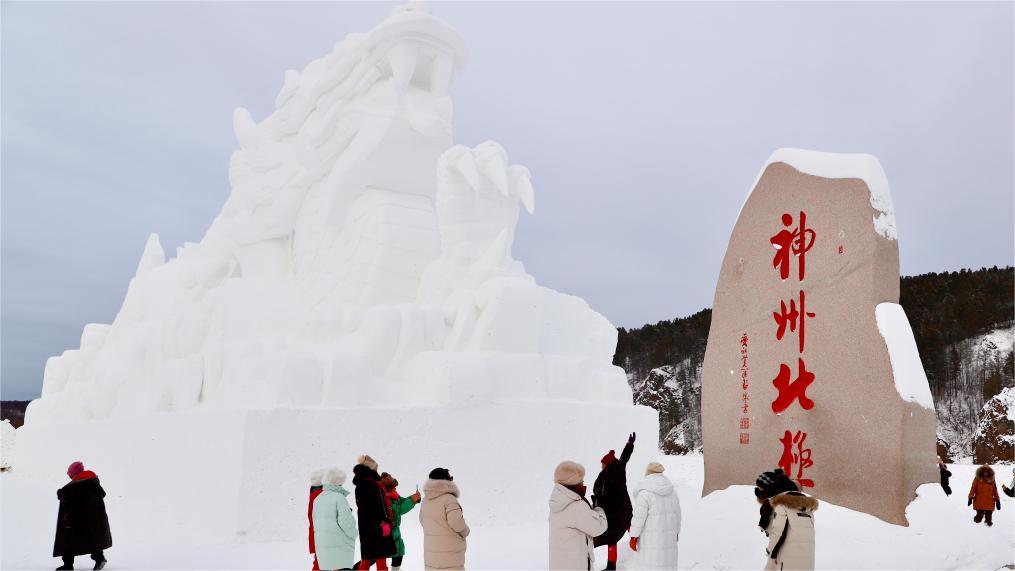Traditional Tibetan dance swings its way into urban life
CHENGDU, Dec. 25 (Xinhua) -- At a public square in Chengdu, a bustling city of over 20 million people in southwestern China, 24-year-old Tibetan dancer Yanggyi, prepared for her performance, adjusting her traditional attire and the bun behind her head.
As the tune of a Tibetan love song permeated the night air, she entered the dance floor, initiating a vibrant Guozhuang dance party.
Guozhuang, which means singing and dancing in a circle, is a traditional Tibetan dance. During leisure time, Tibetans of all ages often gather in circles, gracefully dancing to the rhythmic beats.
Since the 1980s, Chengdu, the capital of Sichuan Province, has become a preferred destination for people relocating from within the province and neighboring regions, thanks to its favorable climate and vibrant economy.
While embracing urban life, an increasing number of Tibetans also brought the Guozhuang dance as well as other cultural heritages to the city. As a result, the art form began to make its way into the lives of many urbanites.
In 2014, Yanggyi, at the age of 15, moved from Jinchuan County in Aba Tibetan and Qiang Autonomous Prefecture to Chengdu. After completing her university studies, she became a kindergarten teacher in the city.
Nine years of life in Chengdu has seen her transition from a teenager in the Tibetan community into a young adult pursuing a career in the city, with Guozhuang serving as the enduring link to her hometown.
Although not professionally trained in dance, Yanggyi considers Guozhuang an intrinsic part of her cultural identity. "Dance is, in my view, the mother of all languages as it can express so many emotions," she said.
In 2021, Yanggyi, along with like-minded people, formed a Guozhuang dance group. Starting with just seven members, the group gained popularity through word of mouth and the power of the internet, attracting a large number of dancing enthusiasts.
Today, Yanggyi's dance group has become one of the most popular Guozhuang dance troupes in Chengdu, boasting 420,000 followers on social media. People travel from Beijing and Shanghai, and even foreign countries to see their performances.
During each dance performance, Yanggyi and her teammates wear Hadas, traditional Tibetan silk scarves symbolizing purity and auspiciousness, with the dance floor flooding with flowers from the appreciative audience.
"We aim to bring joy and relaxation while allowing others to experience the charm of our Tibetan culture," Yanggyi said.
In today's Chengdu, Guozhuang is becoming a new cultural phenomenon, creating waves on social media. Liu Rongping, a 60-year-old resident, is a fervent Guozhuang enthusiast who has enrolled in three dance classes and owns six sets of traditional Tibetan costumes.
"Keeping dancing Guozhuang and refraining from mahjong is my recipe for happiness," Liu said.
Looking ahead, Yanggyi said she wishes that her teammates maintain their love for Guozhuang. "I hope I can take the team to bigger stages for more people to appreciate and enjoy."
Photos
Related Stories
- Fashion show presents traditional Tibetan costumes in Lhasa
- Ranger guards and documents wildlife at Changtang national nature reserve of Xizang
- China's Xizang dubs 108 films into Tibetan language in 2023
- Sheep winter in modern sheds in SW China's Xizang
- View of Qoidenyima Glacier after snow in China's Xizang
Copyright © 2023 People's Daily Online. All Rights Reserved.









